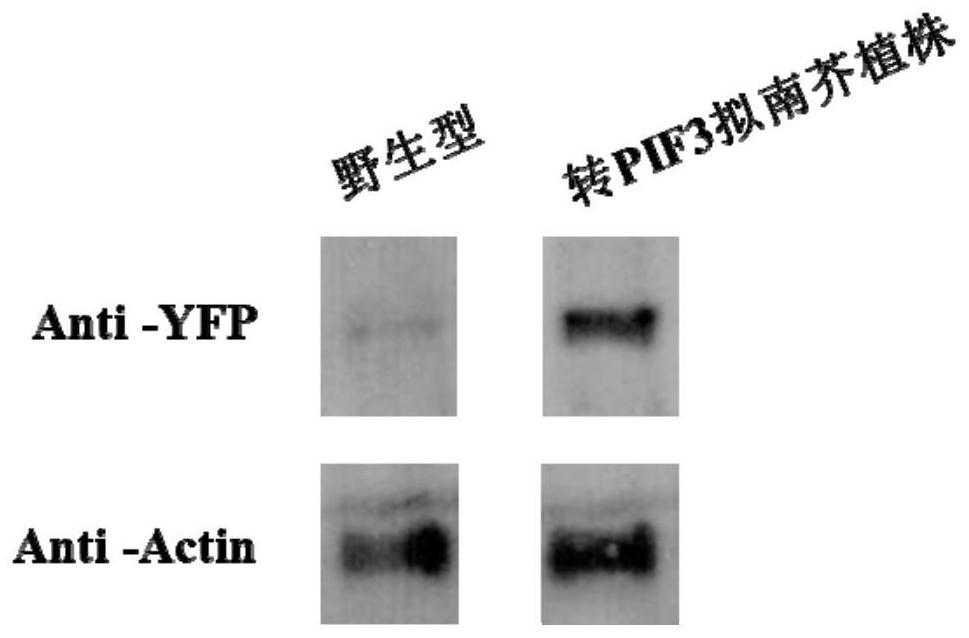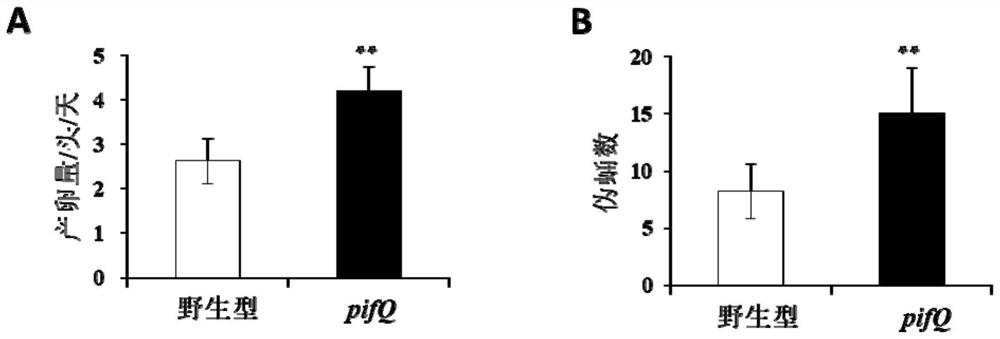Application of Arabidopsis thaliana transcription factor gene pif3 in plant insect resistance
A technology for dicotyledonous plants and plants, applied in the direction of angiosperms/flowering plants, applications, plant peptides, etc., can solve problems affecting plant resistance to biological stress, achieve good potential application value, and improve plant insect resistance.
- Summary
- Abstract
- Description
- Claims
- Application Information
AI Technical Summary
Problems solved by technology
Method used
Image
Examples
Embodiment 1
[0059] The cloning of embodiment 1, PIF3 gene and the construction of expressing PIF3 gene vector
[0060] 1. Cloning of PIF3 gene
[0061] The nucleotide sequence of the cDNA of the PIF3 gene is sequence 1, and the amino acid sequence of the encoded PIF3 protein is sequence 2.
[0062] The CDS (Sequence coding for aminoacids in protein) protein coding region DNA sequence 1 of the PIF3 gene was artificially synthesized, and the upstream primer F and downstream primer R were designed according to the sequence analysis of the coding region.
[0063] Upstream primer F: 5'-CAAGGGTACCATGCCTCTGTTTGAGCTTTT-3' (SEQ ID NO: 3)
[0064] Downstream primer R: 5'-CAAGCTCGAGGACGATCCACAAAACTGATC-3' (SEQ ID NO: 4)
[0065] Using the DNA molecule shown in Sequence 1 as a template, PCR amplification was performed with upstream primer F and downstream primer R to obtain a PCR amplification product of 1575 bp.
[0066] Second, the construction of the vector expressing PIF3
[0067] The vector ...
Embodiment 2
[0069] Embodiment 2, the application of PIF3 gene in regulating plant insect resistance
[0070] 1. Construction of transgenic PIF3 plants expressing PIF3 gene
[0071] The PIF3-expressing vector 35S:PIF3-YF prepared in Example 1 was transformed into the Agrobacterium EHA105 strain to obtain a recombinant Agrobacterium expressing PIF3. Then, the recombinant bacteria were transformed into wild-type Arabidopsis col-0 plants to obtain PIF3-transformed Arabidopsis seedlings.
[0072] The above transformation method is specifically: inoculate the recombinant Agrobacterium expressing PIF3 in 5 mL of LB liquid medium containing antibiotics (rifampicin 50 μg / m L, spectinomycin 50 μg / m L), and cultivate overnight at 28° C. at 220 rpm; 5 mL of LB liquid medium containing recombinant Agrobacterium expressing PIF3 was transferred to 250 mL of liquid medium, and cultured at 28°C and 220 rpm for 16 hours; the bacterial liquid was collected in a 250 mL centrifuge bucket, and centrifuged at ...
Embodiment 3
[0090] Embodiment 3, PIF3 gene regulates plant insect resistance
[0091]1. Construction of pifQ mutants (pif1, pif3, pif4, pif5)
[0092] The purchased pif1, pif3, pif4, pif5 mutant Arabidopsis (these mutants are only pif1, pif3, pif4 or pif5 gene inactivation compared with the wild type.) sow, and select the Arabidopsis that has just flowered, bolted and grown well. Mustard plants, pif1 and pif5 were crossed, and pif3 and pif4 were crossed. Pick the unflowered buds of the female plant and carefully remove the stamens, petals and sepals completely with pointed tweezers, leaving the stigma. Get the stamens of the male parent flowers that have just bloomed and smear the stigma of the female parent repeatedly, and get final product when you see that the small hole above the stigma is filled with anthers. After 2-3 days, it is observed that the stigma elongates and becomes thicker, which means that the hybridization is successful. If the change is not too large or slowly wither...
PUM
 Login to view more
Login to view more Abstract
Description
Claims
Application Information
 Login to view more
Login to view more - R&D Engineer
- R&D Manager
- IP Professional
- Industry Leading Data Capabilities
- Powerful AI technology
- Patent DNA Extraction
Browse by: Latest US Patents, China's latest patents, Technical Efficacy Thesaurus, Application Domain, Technology Topic.
© 2024 PatSnap. All rights reserved.Legal|Privacy policy|Modern Slavery Act Transparency Statement|Sitemap



